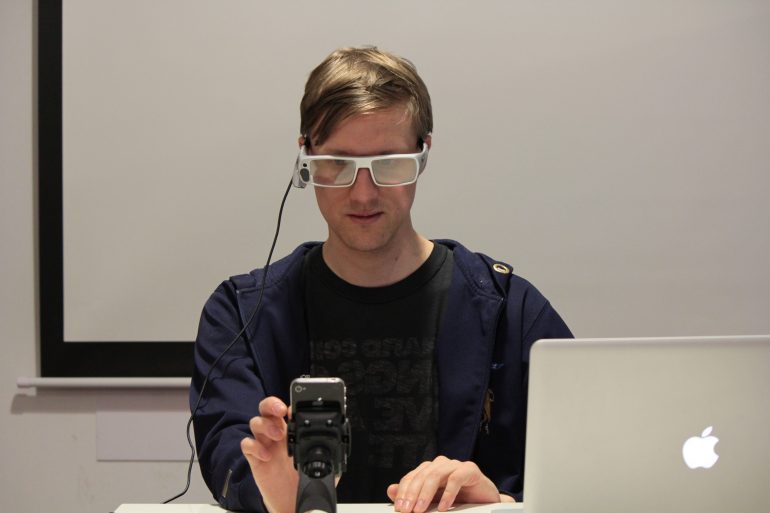One of the most powerful benefits of wearable technology is the gathering of personal data. For activity trackers, such as Fitbit and Nike Fuelband, this data is used by the individual to better understand and improve their health. For brands, access to personal wearable data could be used to improve the way they market and even develop their product and services to consumers.
Google has already been rumored to be getting ready to leverage Glass in this way with their “pay-per-gaze” advertising model. Using Glass’ eye tracking capabilities, advertisers would be charged based on users actually seeing their ad, taking pay-per-engagement to a whole new level.
Glass and other smart glasses like it could also be used to disrupt non-digital ads in the same way. For the first time ever, advertisers may be able to get digital analytics for more traditional forms of advertising such as print and out-of-home (billboards, transit shelters etc.).
But the power of wearables for marketers goes well beyond ad tracking. The measurement capabilities of wearables like eye tracking smart glasses, heart rate monitoring wristbands and brain-sensing headbands will also change the focus group.
Focus groups have long been a pillar for brands in planning and decision-making. Today, marketers rely heavily on users’ explicit responses, opinions and feedback as the output from a focus group. However, the human element of preconceived notions and expectations can make these exercises very unreliable.
But focus groups of tomorrow won’t rely on subjective responses but employ what today is being called neuromarketing to measure the attentional and emotional response of participants. Neuromarketing is an umbrella term which encompasses neuroscience, biometrics and other methodologies for marketing purposes. It uses technologies such as EEG, fMRI and eye tracking.
Recently, Toronto-based neuromarketing firm, True Impact Marketing teamed up with mobile application shop, Plastic Mobile, to understand the “The Science Behind Mobile Design”. For the purpose of this study, they hooked up thirty participants with a Tobii Glasses Eye Tracker and Emotiv EEG Neuroheadset and had them move through the buying process on the Pizza Pizza, Best Buy and Hyatt Hotel mobile applications.
Using a mix of traditional focus group tactics and newer neuromarketing methods, Plastic Mobile was able to identify times when users would say one thing but feel another. For example, when asked what their favorite part of the Pizza Pizza app experience was, 62% of participants said their favorite part was selection and 55% said their least favorite was checkout. However, according to the EEG monitoring, selection was second lowest in terms of emotional engagement, at 19%, and participants’ favorite part was the checkout, at 100% activity.
The study was also able to put some qualitative data around things that we would assume are true with mobile apps based solely on gut or common sense. For example, Plastic Mobile concluded that longer loading times in mobile apps cause frustration and risk abandonment. This was based on the Best Buy app receiving a 80% emotional engagement level upon opening the app due to a 5.4s load time versus Pizza Pizza’s 20% level due to a 7.2s load time.
Eye tracking and brainwave measurement for marketing purposes isn’t new. But today, neuromarketing firms, like Toronto’s True Impact Marketing, need to be commissioned to provide the necessary equipment and analysis. As wearables with the same measurement capabilities get in the hands of the everyday consumer (Google Glass, Muse to name a few), brands may be able to simply tap into this data. We may even see a time when users grant permission for brands to access this information in lieu of loyalty incentives as we do with our online behaviour now.



